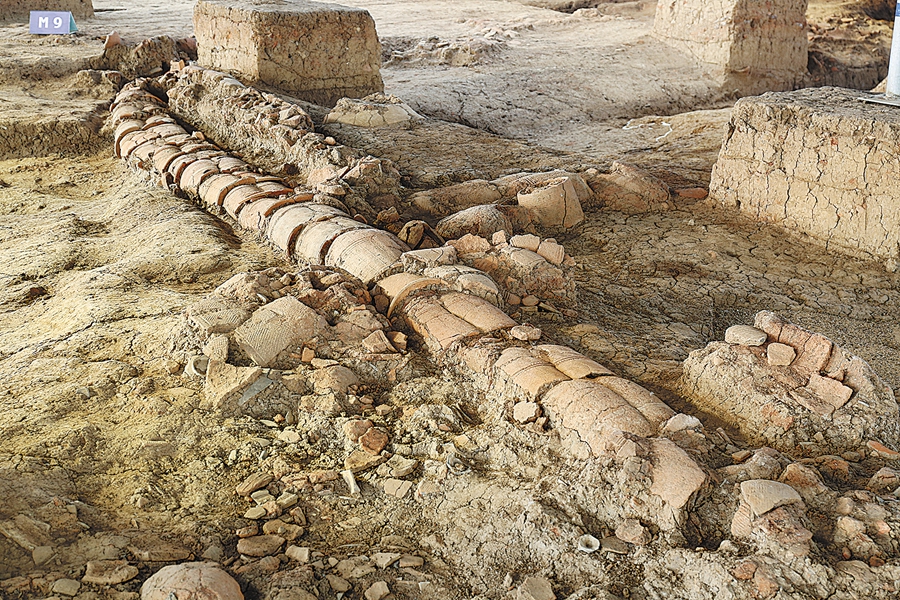

In 1989, Fang was in the same place where Zan now works at the Shijiahe site to find the first traces of houses for the ancient city's elite. At that time, Fang was an intern with the archaeology group and they stopped further digging due to the limits of technology at the time.
A team leader now, Fang says it's like a mission for him to resume the work he left unfinished 33 years ago.
According to Fang, the ancient settlement clusters at the Shijiahe site were first built between 5,800 to 4800 years ago. The center of the city was Tanjialing. The culture developed to reach its peak between 4,800 to 4,200 years ago, represented by Shijiahe city, built at the site covering an area of 1.2 million sq m. The last period was defined as post-Shijiahe culture between 4,200 to 3,800 years ago, when many items of sophisticated jadeware were produced.
"It's a continuous and developing culture in the middle reaches of the Yangtze River. It's also a key site to trace the origins of Chinese civilization," Fang says.
The appearance of a city and the social division of labor are standards by which to define a civilization. Shijiahe site had the largest capital city in the region with dozens of small tribe-like cities scattered in the nearby area. A moat, the widest area of which was more than 100 meters, surrounded the ancient city.